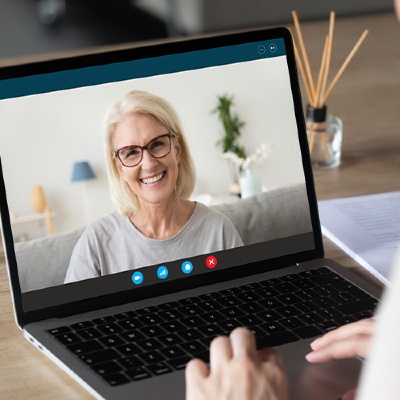How to Create a Culture of Psychological Safety that Works for Hybrid Work
Amy C. Edmondson is the Novartis Professor of Leadership and Management at Harvard Business School and author of The Fearless Organization: Creating Psychological Safety in the Workplace for Learning, Innovation, and Growth.
With so much riding on change, innovation, and creativity, it is essential to attract and retain top talent—but what good does this talent do if no one is able to speak their mind? The role of Psychological Safety in allowing people to speak up and driving excellence is essential.
Dr. Edmondson shares how to build a culture of psychological safety, especially in a hybrid work environment.
How do we build psychological safety particularly in hybrid work?
In these early days of hybrid work, we may need to expand the domain of psychological safety. The research over the last 20 years and the practice have traditionally been focused on enabling candor at work, and sometimes even deliberately, not with respect to your personal life. In hybrid work, these domains are bleeding, and the boundary is blurring. We have to think through some very complicated questions of staffing, scheduling, and importantly coordination. And those new factors and arrangements will have to take into account personal circumstances.

Psychological safety in a hybrid face-to-face or fully virtual workplace looks like this:
- Framing the work to build a shared understanding of the complexity and novelty of where we find ourselves
- Actively inviting engagement by asking good questions
- Responding productively by appreciating what others are bringing to the table
- Looking forward to how do we do better from here
What other recommendations do you have to build psychological safety?
Set the scene that’s related to framing the work, have a discussion, explore the possibilities, and say, “I need your help” or “I need your input,” then lead the way. Demonstrate candor yourself around mistakes, potentially embarrassing topics, or missteps that you have engaged in, and take baby steps.
Don’t open the door to really difficult, personal conversations right away, don’t force people or imply that people need to be forced into that, but making small steps yourself and then welcoming others’ disclosures will build confidence that that’s okay to do. Share positive examples of people who are navigating these arrangements in thoughtful ways, and then be a watchdog.

I believe we all have a little tiny Henry Ford inside our heads hiding, by which I mean we have this kind of default belief that we’re supposed to just work hard and get our work done, and it should unfold straightforwardly. This is no longer the case, but if we don’t challenge it directly, it has its power over us and our teams. So we have to be clear and compelling about the need for voice and learning in our VUCA world.
If you have high uncertainty and high interdependence, or either one of them, you need a level of candor that most places don’t have to top out the possibilities for value creation.
Who exemplifies this need for voice and learning in our VUCA world?
Someone who does this well is David Kelley, Stanford engineering professor, founder, and then longtime CEO of IDEO, arguably the world’s most celebrated innovation consultancy. And David would say things like this all the time at IDEO, “Fail often in order to succeed sooner.” Great statement. Silicon Valley at its best, but what he’s really doing is framing the work.
Intellectually, I suspect any employee at IDEO already knows this, but emotionally, they’ve never gotten an A- in their entire life, right? They don’t like to fail. None of us do. So what David in his cheerful way does is reframe to remind, get it back, front, center. Innovation, if you want to play this sport, guess what? It requires failure.
Now, not all of us have to have tons and tons of failure in our work lives, thankfully, but we all have to have a little. So framing is necessarily context-specific. Some work is, thankfully, well understood. Some work is fairly well understood, but there’s still uncertainty and variability, and some work is really in new territory. I’m arguing, at least today, hybrid work is reasonably new territory. What does that mean? Well, uncertainty is going up. And with that, failure is going to go up. So let’s try to have good failure.
Try to reduce the preventable failures to zero, anticipate and then mitigate the impact of the complex barriers, and promote and celebrate the intelligent failures.
What does good failure mean?
Good failures are intelligent failures. Make no mistake, we prefer success to failure. We have to learn from them, we have to be okay with our humanity, and the complex failures where novel factors combine in just the wrong way to produce a bad outcome. But the intelligent failures are the ones I hope we can have more of in the hybrid workplace in these early days. We’re gonna try things that we hope will work, and sometimes will be wrong.
There are some rules we can apply wisely to hybrid work:
- You’re exploring an opportunity. When we’re in the context of hybrid work, this is a new opportunity to rethink work arrangements.
- Be hypothesis-driven. Don’t just try stuff without thinking, think first. Think about what you think will work and why, maybe even talk to people about it, then immediately test it.
- Be as small as possible. You don’t bet the whole farm or the whole company on some unproven arrangement. You try it. You pilot it. You improve it. Agile.
Fail well in this hybrid work environment. Try to reduce the preventable simple failures to zero, anticipate and then mitigate the impact of the complex barriers, and promote and celebrate the intelligent failures. If you want to be error-free in some months’ time, you have to be error-aware all the way through. And this can only happen if people are completely free and open to talk about what they’re worried about, what they see.
Are You Ready?
Get in touch with us to schedule a demo and see how AceUp can help you build a premier coaching program for your top talent.